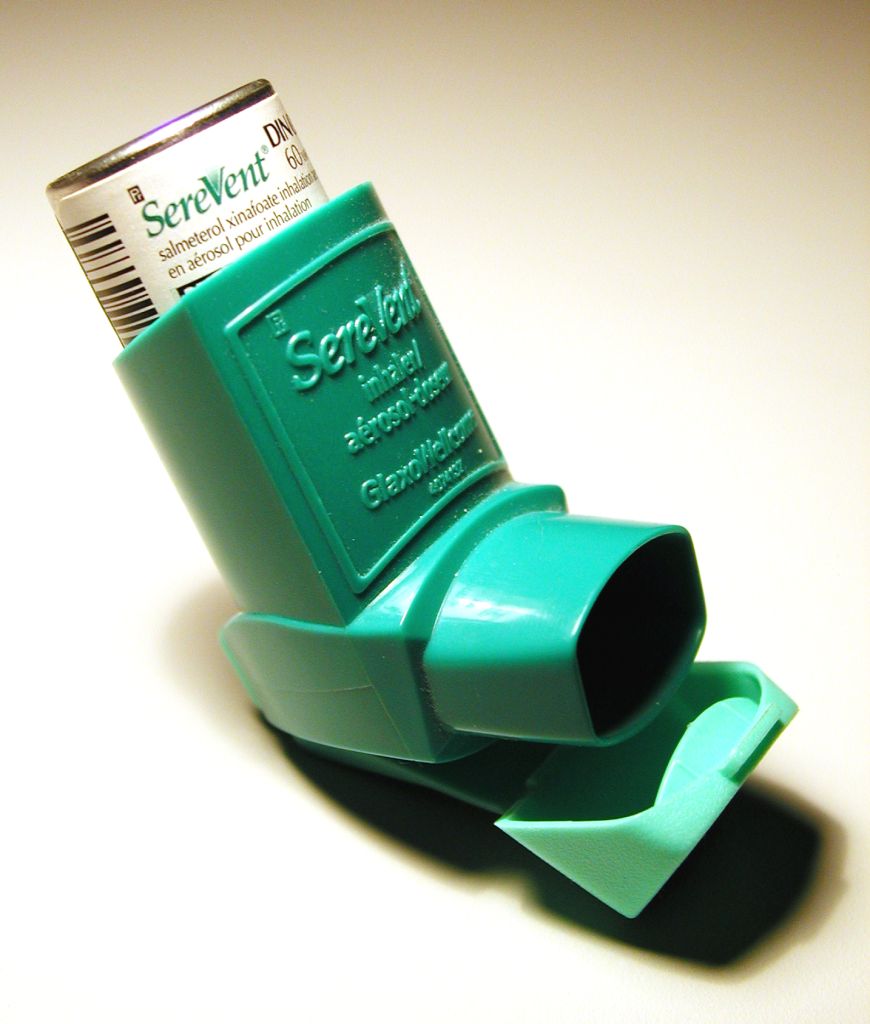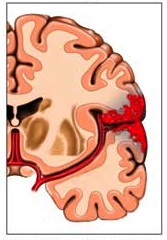7.7 Heart Attack, Stroke & Asthma

Anatomy & Physiology
Unit 7 - Cardiovascular & Respiratory Systems
7.7 - I CAN diagnose, explain and treat heart attacks, strokes, and asthma.
- 1.
Which is NOT a symptom of a heart attack?
- A.
Shortness of breath
- B.
Excessive sweating
- C.
Slurred speech
- D.
Pain in the chest area
Correct Answer
C. Slurred speechExplanation
Slurred speech is not a symptom of a heart attack. A heart attack occurs when the blood flow to the heart is blocked, leading to damage or death of the heart muscle. Common symptoms include shortness of breath, excessive sweating, and pain in the chest area. Slurred speech, on the other hand, is typically associated with conditions such as stroke or neurological disorders, not a heart attack.Rate this question:
-
- 2.
A patient is suffering from difficulty breathing every time she walks up the stairs. This patient is likely:
- A.
Having a heart attack
- B.
Suffering from asthma
- C.
Having a stroke
- D.
Suffering from low blood pressure
Correct Answer
B. Suffering from asthmaExplanation
The patient is likely suffering from asthma because difficulty breathing during physical activity, such as walking up the stairs, is a common symptom of asthma. Asthma is a chronic respiratory condition characterized by inflammation and narrowing of the airways, leading to difficulty in breathing. This condition can be triggered by various factors, including exercise. Therefore, the patient's symptoms align with the typical presentation of asthma.Rate this question:
-
- 3.
A 65-year-old patient claims she is having a hard time catching her breath, and she feels a pain in her left arm that is getting worse with time. She probably:
- A.
Has asthma
- B.
Is having a stroke
- C.
Is having a heart attack
- D.
Is healthy
Correct Answer
C. Is having a heart attackExplanation
Based on the symptoms described by the patient, including difficulty in breathing and worsening pain in the left arm, it is likely that she is experiencing a heart attack. These symptoms are commonly associated with a heart attack, especially in older individuals. Asthma typically presents with wheezing and shortness of breath, while a stroke would typically manifest with neurological symptoms such as weakness or numbness on one side of the body. Considering the patient's age and the specific symptoms mentioned, a heart attack is the most plausible explanation.Rate this question:
-
- 4.
A 70-year old patient calls 911 because she is worried about strange symptoms she has been having for the last 20 minutes. She cannot feel the right side of her body, and her vision is blurry. You tell her....
- A.
Hurry up and get to the hospital; you are having a stroke!
- B.
Take your time and be careful, but come to the hospital; you are having a stroke!
- C.
Hurry up and get to the hospital; you are having a heart attack!
- D.
Get your inhaler and take some deep breaths; you are having an asthma attack!
Correct Answer
A. Hurry up and get to the hospital; you are having a stroke!Explanation
The symptoms described by the patient, including the inability to feel the right side of her body and blurry vision, are indicative of a stroke. A stroke occurs when blood flow to the brain is disrupted, leading to the loss of brain function. It is a medical emergency that requires immediate attention. Therefore, advising the patient to hurry up and get to the hospital is the correct response in this situation.Rate this question:
-
- 5.
Which of the following is NOT a risk factor for a stroke?
- A.
High blood pressure
- B.
High stress
- C.
Smoking
- D.
Asthma
Correct Answer
D. AsthmaExplanation
Asthma is not a risk factor for a stroke because it is a chronic respiratory condition that affects the airways, causing breathing difficulties. While asthma can have its own complications, such as exacerbations and respiratory infections, it does not directly contribute to the development of a stroke. On the other hand, high blood pressure, high stress, and smoking are known risk factors for stroke. High blood pressure can damage blood vessels and increase the risk of clot formation, while high stress and smoking can both contribute to the narrowing and hardening of arteries, leading to reduced blood flow to the brain and an increased risk of stroke.Rate this question:
-
- 6.
An angioplasty....
- A.
Treats asthma by relaxing the diaphragm
- B.
Treats heart attacks by inflating a balloon that opens up the blocked artery
- C.
Treats strokes by relieving swelling due to bleeding in the brain
- D.
Helps patients prevent against future asthma attacks
Correct Answer
B. Treats heart attacks by inflating a balloon that opens up the blocked arteryExplanation
Angioplasty is a medical procedure used to treat heart attacks by opening up blocked arteries. During angioplasty, a balloon is inflated inside the blocked artery, which helps to push aside the plaque or blood clot causing the blockage. This allows for improved blood flow to the heart muscle, relieving the symptoms of a heart attack and preventing further damage to the heart.Rate this question:
-
- 7.
A person with asthma uses this because it helps to:
- A.
Relax the muscles around the bronchioles
- B.
Increase the heart rate
- C.
Make the diaphragm contract to increase breathing
- D.
Lower the blood pressure
Correct Answer
A. Relax the muscles around the bronchiolesExplanation
This person with asthma uses this because it helps to relax the muscles around the bronchioles. Asthma is a condition that causes inflammation and narrowing of the airways, making it difficult to breathe. By relaxing the muscles around the bronchioles, this medication helps to widen the airways and make breathing easier for the person with asthma.Rate this question:
-
- 8.
Which of the following is NOT an acceptable treatment for a heart attack?
- A.
Aspirin
- B.
Angioplasty
- C.
Bypass surgery
- D.
Anti-inflammatory medicines
Correct Answer
D. Anti-inflammatory medicinesExplanation
Anti-inflammatory medicines are not an acceptable treatment for a heart attack because they do not address the underlying cause of the condition, which is usually a blockage in the coronary arteries. Aspirin is commonly used to help prevent blood clotting during a heart attack. Angioplasty and bypass surgery are both invasive procedures that can help restore blood flow to the heart by removing or bypassing the blockage. However, anti-inflammatory medicines are not effective in treating the immediate emergency of a heart attack.Rate this question:
-
- 9.
The image below shows a patient suffering from:
- A.
An ischemic stroke
- B.
A hemorrhagic stroke
- C.
A heart attack
- D.
Asthma
Correct Answer
B. A hemorrhagic strokeExplanation
The image shows a patient suffering from a hemorrhagic stroke. This can be determined by the presence of bleeding in the brain, which is indicated by the bright white area in the image. Ischemic strokes, on the other hand, are caused by a blockage in the blood vessels supplying the brain, and would not show bleeding. A heart attack would primarily affect the heart and not the brain, while asthma is a respiratory condition and would not cause bleeding in the brain. Therefore, a hemorrhagic stroke is the most likely explanation for the image.Rate this question:
-
- 10.
A heart attack usually occurs because:
- A.
The alveoli are inflamed
- B.
The coronary artery is blocked by a blood clot
- C.
An artery in the brain bursts
- D.
The vena cava collapses
Correct Answer
B. The coronary artery is blocked by a blood clotExplanation
A heart attack usually occurs when the coronary artery is blocked by a blood clot. The coronary artery supplies oxygen-rich blood to the heart muscle. When a blood clot forms and blocks this artery, it prevents the flow of blood and oxygen to the heart. This lack of oxygen can cause damage to the heart muscle, leading to a heart attack.Rate this question:
-
Quiz Review Timeline +
Our quizzes are rigorously reviewed, monitored and continuously updated by our expert board to maintain accuracy, relevance, and timeliness.
-
Current Version
-
Mar 22, 2023Quiz Edited by
ProProfs Editorial Team -
May 05, 2013Quiz Created by
Rlabov
 Back to top
Back to top




